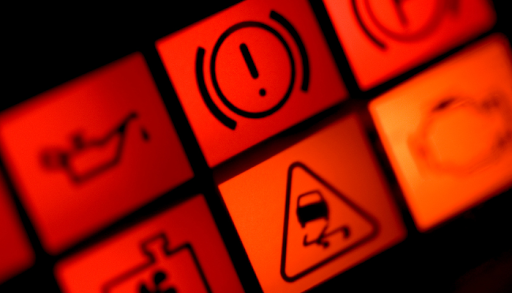Top 10 Car Warning Lights You Should Never Ignore

Dashboard warning lights are your car’s way of telling you something is wrong. Dashboard lights are crucial indicators of vehicle health, alerting you to potential issues that may need attention. The car dashboard serves as the main interface where these warning lights and symbols appear. Each dashboard light acts as a warning indicator, signaling specific problems with different vehicle systems. Sometimes, drivers may experience ‘light shows’—an array of dashboard warning lights illuminating at once—which can indicate multiple issues or system checks. Some are mild alerts, but others require immediate attention to avoid damage or danger. In this guide, we’ll go over the top 10 most critical warning lights that drivers should never ignore—what they mean, and what actions to take.
Introduction to Car Warning Lights
Car warning lights are a vital part of your vehicle’s safety system, designed to catch your attention the moment something isn’t right. These dashboard warning lights can signal anything from a minor issue, like a loose gas cap or low oil pressure, to more serious problems such as a faulty alternator or a blocked cooling system. Understanding what each car warning light means is crucial, as ignoring them can quickly turn a simple fix into a costly repair or even complete engine failure. Not only can this put your vehicle at risk, but it can also endanger you and other road users. By learning to recognize and respond to car warning lights, you can help prevent breakdowns, avoid expensive repairs, and keep everyone on the road safer.
1. Check Engine Light
Symbol: Engine outline (often yellow or orange), typically depicted as a ‘car engine’ icon.
Meaning: This light signals a problem with the vehicle’s engine or emissions system.
Why You Shouldn’t Ignore It: A solid light may be something minor like a loose gas cap. A flashing one usually means an engine misfire, which could damage the catalytic converter.
What to Do: When the engine management light shows on your dashboard, stop driving if it is flashing. Visit a mechanic or run a diagnostic scan.
2. Oil Pressure Warning Light
Symbol: Oil can with a drop
Meaning: Low oil pressure in the engine. The oil pressure warning light can be triggered by low engine oil or a failing oil pump.
Why You Shouldn’t Ignore It: Without proper oil pressure, engine parts can wear down or seize within minutes. High oil temperature can also be a sign of poor lubrication and potential engine damage. Maintaining your car’s engine oil system is crucial to prevent costly repairs.
What to Do: Pull over immediately, check the oil level, and call a mechanic. Check for oil leaks as a possible cause of low oil pressure.
3. Battery/Charging System Warning
Symbol: Car battery. The battery warning light is usually a rectangular icon with plus and minus signs.
Meaning: There’s a problem with your battery, alternator, or electrical charging system. The battery warning light means there is an issue with the charging system that needs attention.
Why You Shouldn’t Ignore It: Your vehicle may lose power and eventually shut off, leaving you stranded. A lit battery light can indicate problems with the alternator or car’s battery.
What to Do: Turn off non-essential electronics and get the battery and alternator checked. Have a mechanic inspect your car’s battery and the vehicle’s electrical system as soon as possible.
4. Brake System Warning Light
Symbol: Circle with an exclamation mark or “BRAKE” text, commonly known as the brake warning light.
Meaning: Low brake fluid, worn brake pads, or a failure in the braking system. The warning can also be triggered by a low brake fluid level. The brake pad monitoring light is another indicator that may appear if brake components are worn.
Why You Shouldn’t Ignore It: Faulty brakes are a serious safety risk. A brake fluid leak can lead to brake failure and must be addressed immediately to ensure your safety.
What to Do: Stop driving if braking feels weak. Call a tow or get the car checked immediately.
5. Engine Temperature Warning
Symbol: Thermometer over waves
Meaning: Your engine is overheating.
Why You Shouldn’t Ignore It: Overheating can warp engine components or cause a total breakdown. Engine overheating may also be caused by head gasket failure, which can result in coolant leaks and severe engine damage if not addressed promptly.
What to Do: Pull over, turn off the car, let it cool, and check coolant levels before driving further.
6. Airbag Warning Light
Symbol: The icon shows a person sitting with a seatbelt and a circle in front, representing the airbag.
Meaning: There’s a fault in the airbag system. This warning light is also known as the supplement restraint system (SRS) warning.
Why You Shouldn’t Ignore It: In the event of a crash, the airbag may not deploy—or worse, deploy unexpectedly.
What to Do: Schedule a service immediately for inspection.
7. ABS Warning Light
Symbol: “ABS” inside a circle
Meaning: The anti-lock braking system has a fault.
Why You Shouldn’t Ignore It: ABS prevents your wheels from locking during emergency braking. Without it, your braking performance may be compromised.
What to Do: Normal brakes may still work, but get it checked soon.
8. Tire Pressure Monitoring System (TPMS) Light
Symbol: Exclamation mark inside a flat tire shape
Meaning: One or more tires are under-inflated.
Why You Shouldn’t Ignore It: Low tire pressure affects fuel economy, handling, and increases the risk of a blowout.
What to Do: Check all tires and inflate them to the correct PSI.
9. Transmission Temperature Light
Symbol: Thermometer with a gear
Meaning: Your transmission is overheating.
Why You Shouldn’t Ignore It: High transmission temps can lead to failure and expensive repairs.
What to Do: Stop the car, allow it to cool, and avoid towing or steep hills until serviced. Check transmission fluid levels, as low or contaminated fluid can cause overheating.
10. Traction Control Warning Light
Symbol: Car with skid marks
Meaning: There’s an issue with your traction control system. This warning may also relate to the car’s electronic stability programme (ESP) system.
Why You Shouldn’t Ignore It: In wet or slippery conditions, your vehicle may be more prone to skidding.
What to Do: Drive cautiously and get the system checked, especially if paired with the ABS light.
Brake Pad and Wear Warning Lights
Brake pad and wear warning lights are among the most important dashboard warning lights related to your vehicle’s braking system. When the brake pad warning light appears, it’s a clear sign that your brake pads are worn and need replacing soon. Similarly, a wear warning light may indicate that your brake discs or rotors are also reaching the end of their service life. Ignoring these warning lights can seriously compromise your braking system, leading to reduced stopping power and increasing the risk of accidents for you and other road users. The brake system warning light—sometimes called the red brake system light—signals a more urgent issue, such as dangerously low brake fluid or a major fault in the braking system. If any of these warning lights appear, consult your vehicle’s handbook for guidance and arrange for a professional inspection as soon as possible to keep your brakes—and your safety—in top condition.
How to Respond to a Warning Light
When a warning light appears on your dashboard, it’s important to act quickly and safely. Start by checking your vehicle’s handbook to identify what the warning light indicates and follow the recommended steps. If you see a red warning light, this usually signals a potentially dangerous problem—pull over to a safe spot and turn off the engine immediately. For amber or yellow warning lights, you can usually continue driving with caution, but don’t ignore the issue; plan to have your car checked as soon as possible. It’s also wise to check your oil levels, coolant levels, and tire pressure, as these are common culprits behind many dashboard warning lights. By responding promptly to any warning lights, you can help prevent costly repairs and ensure your safety and the safety of others on the road.
The Consequences of Ignoring Warning Lights
Ignoring warning lights can lead to serious consequences for both your vehicle and your safety. When a warning light—such as the oil pressure warning light or brake system warning light—is left unchecked, a minor issue can quickly escalate into a major, potentially dangerous problem. For example, neglecting the oil pressure warning light can result in low oil pressure, causing severe engine damage or even complete engine failure. Similarly, ignoring the brake system warning light can compromise your braking system, putting you and other road users at risk. Other common warning lights, like the check engine light, engine management light, engine temperature warning light, ESP system light, and transmission temperature warning light, all signal issues that can lead to costly repairs or breakdowns if not addressed. Taking warning lights seriously and acting quickly can help you avoid expensive repairs, maintain your vehicle’s health, and keep everyone on the road safe.
Conclusion
Dashboard warning lights are not just reminders—they’re urgent messages from your vehicle. Knowing which ones signal danger and how to respond can prevent costly repairs, breakdowns, and accidents. Always refer to your car’s manual for specific information and consult a professional if you’re unsure.
Stay alert, stay informed, and take action when your car speaks up.






